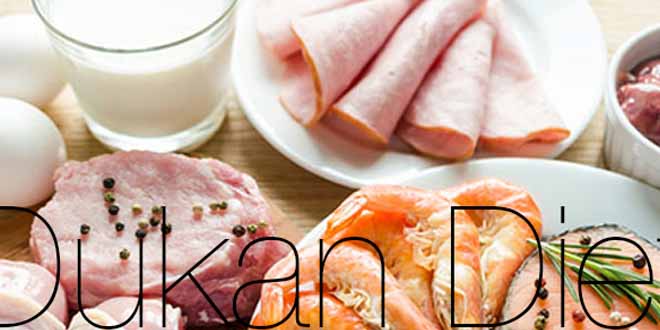
Run around on the Dukan Diet
The Dukan Diet is a protein-based nutritional approach designed by Pierre Dukan, a French nutrionist and dietician. It includes 100 foods, of which 68 are animal sourced and 32 come from plants. And you can eat as much as you like, as long as it comes from those 100 foods. Lean protein, oat bran, water and a daily 20-minute walk are at the heart of the plan. The theory is that limiting carbohydrates forces your body to burn fat. There are 4 phases devised in the plan – Attack phase, Cruise phase, Consolidation phase and Stabilization phase.
The phases
Attack phase
The aim here is to lose weight rapidly, about two to three kg within two to ten days. It is said to be a way of kick starting the metabolism. The dieters can eat nothing but lean protein, and in unlimited amounts as there is no calorie counting. It is important that the protein is low in fats. Protein can be all kinds of beef, chicken, eggs, soy and cottage cheese. The dieter is told to avoid meats with added sugar. The dieter also consumes of 1.5 tablespoons of oat bran daily, the only carbohydrate source allowed in this phase. Oat bran is very high in fiber, meaning that a large proportion of the carbs cannot be broken down and digested, making oat bran less carbohydrate-rich than you think. Oat bran also suppresses hunger because it grows to up to twenty times its size in the stomach. Also, at least 1.5 liters of water must be consumed each day.
Cruise phase
32 specific vegetables are added during this phase. Fruit is not allowed. The aim is to help the dieter achieve their target bodyweight more gradually. Although based on specific conditions, the length of the Cruise phase last 1 kg weight loss per week. So if a person wants to lose 15 kg, the phase last 15 weeks. Vegetables can be consumed as long as they are not starchy. So avoid corn and peas but add spinach, okra, lettuce and green beans. The dieter can also eat unlimited amounts of low fat protein which were included from the first phase. The 1.5 liter of water and oat bran consumption continues. In this phase, the dieter alternates as far as lean proteins and vegetables go. For an example, one day the dieter is lean proteins, the next day he eats lean proteins combined with unlimited amounts of low starch vegetables.
Consolidation phase
The aim here is to prevent the dieter from putting lots of weight back on. The individual can consume unlimited amounts of protein and vegetables daily, as well as one piece of low-sugar fruit, one portion of cheese and two slices of whole-grain bread. The dieter is allowed to have one or two servings of starchy food and one or two celebration meals each week. In a celebration meal, the individual can eat whatever they want. During the Consolidation phase, the dieter starts eating the core diet of pure protein one day each week, preferably on the same day of each week.
Stabilization phase
This is the long term maintenance part of the plan. People can eat whatever they want as long as they follow some simple rules:
- One day each week, they must have an all protein day, as in the Attach phase.
- Eat three tablespoons of oat bran each day.
- Go for a 20 minute walk each day.
- Never take escalators or elevators
In order to succeed long term, the dieter must follow the Dukan stabilization phase for the rest of their lives. It must become a part of their lifestyle. Dieters are allowed to consume artificial sweeteners, vinegars, sugar-free gum, spices, and they are also advised to take multivitamins and minerals.
So what are the 100 foods?
68 pure proteins
Lean Meat – Beef tenderloin, buffalo, extra lean Kosher hot dogs, lean slices of roast beef, reduced fat bacon, soy bacon, steak: flank, sirloin, London broil, veal chops, veal scalopini, venison
Poultry – Chicken, chicken liver, cornish hen, fat-free turkey and chicken sausages, low fat deli slices of chicken or turkey, ostrich steak, quail, turkey, wild duck
Fish – Artic char, catfish, cod, flounder, grouper, haddock, halibut, herring, mackeral, mahi mahi, monk fish, orange roughy, perch, red snapper, salmon or smoked salmon, sardines, sea bass, shark, sole, surimi, swordfish, tilapia, trout, tuna
Shellfish – Clams, crab, crawfish, lobster, mussels, octopuss, oysters, scallops, shrimp, squid
Vegetarian proteins – Fat-free cottage cheese, fat-free cream cheese, fat-free milk, fat-free plain Greek style yoghurt, fat-free ricotta, fat-free sour cream
Eggs – Chicken, quail, duck
32 vegetables
Artichoke, asparagus, bean sprouts, beet, broccoli, brussels sprouts, cabbage, carrot, cauliflower, celery, cucumber, eggplant, endive, fennel, green beans, kale, lettuce, mushrooms, okra, onions, palm hearts, peppers, pumpkin, radishes, rhubarb, spaghetti squash, squash, spinach, tomato, turnip, watercress, zucchini

